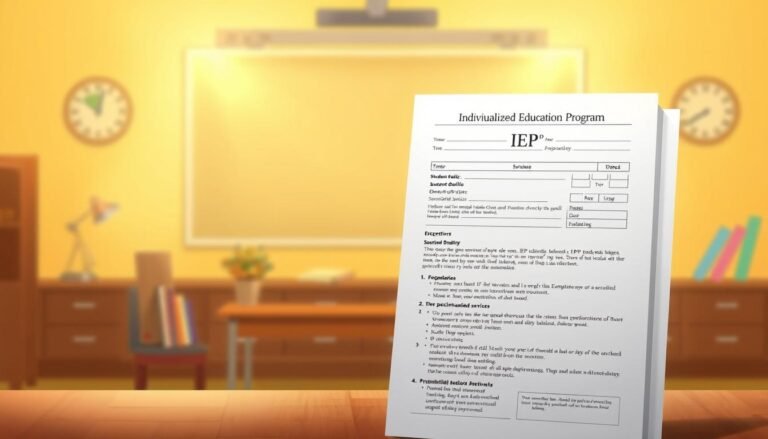Breaking Barriers: How Assistive Technology Transforms Education for Students with Learning Disabilities
Introduction
Imagine a classroom where every student, regardless of their learning abilities, has equal access to knowledge and resources. Picture a world where students with learning disabilities are not just included but celebrated for their strengths and unique perspectives. This vision is becoming a reality, fueled by the transformative power of assistive technology. Breaking Barriers: How Assistive Technology Transforms Education for Students with Learning Disabilities is not just about providing tools; it’s about creating an inclusive environment where every learner can thrive.
Educators, parents, and technology innovators are uniting to dismantle the obstacles that have historically marginalized students with learning disabilities. This article explores the defining role assistive technology plays in reshaping educational landscapes, providing practical examples, insightful case studies, and essential strategies that inspire action and awareness.
Understanding Learning Disabilities
What are Learning Disabilities?
Learning disabilities are neurological disorders that affect the brain’s ability to receive, process, or communicate information. These disabilities can manifest in various ways, including difficulties with reading (dyslexia), writing (dysgraphia), math (dyscalculia), and information processing. It’s crucial to understand that learning disabilities do not reflect a person’s intelligence; instead, they highlight the unique ways in which individuals learn and engage with information.
The Importance of Early Intervention
Research consistently shows that early intervention is crucial for students with learning disabilities. By identifying challenges early on and leveraging assistive technology, educators can provide tailored support and intervention strategies. This not only enhances academic performance but also fosters confidence and a love for learning.
The Role of Assistive Technology
What is Assistive Technology?
Assistive technology encompasses a wide range of tools and services that help individuals with disabilities perform tasks that might otherwise be difficult or impossible. In education, this includes software, hardware, and strategies designed to support learning.
Types of Assistive Technology:
- Reading Assistance Software: Tools like text-to-speech programs convert written text into spoken words, helping students with dyslexia and visual impairments.
- Note-Taking Devices: Digital notebooks and audio recorders enable students with learning disabilities to capture spoken information without the stress of traditional note-taking.
- Speech-to-Text Software: Programs that allow students to dictate their thoughts and have them transcribed automatically can significantly assist those with writing challenges.
Case Study: The Impact of Text-to-Speech Software
At Maple Hill Elementary, a student named Sarah struggled with reading comprehension due to her dyslexia. With the introduction of text-to-speech software, Sarah could access her reading materials in an auditory format. As a result, her reading skills improved dramatically, and she became an active participant in discussions, demonstrating her understanding of the material. This transformation showcases a clear example of breaking barriers through the use of assistive technology.
Personalizing Education
Customizing Learning Experience
Assistive technology allows educators to customize learning experiences for students with learning disabilities. By accommodating individual needs, educators can enhance student engagement and facilitate a deeper connection to the curriculum.
Benefits of Personalized Learning:
- Increased Engagement: Tailored interventions keep students interested and motivated.
- Better Retention: Customized content can aid memory and understanding, making learning memorable.
- Empowerment: Giving students tools to take charge of their learning can boost their self-esteem.
Case Study: Custom Learning Pathways
In a middle school in San Francisco, teachers implemented a customized learning pathway using various assistive technologies. One student, Mike, who has a learning disability affecting his reading skills, struggled with traditional text materials. By utilizing customized audiobooks and interactive learning apps, Mike made significant progress. His reading scores improved, and he developed a passion for literature that he never had before. This progress exemplifies how assistive technology transforms education for students with learning disabilities.
Collaborative Learning Environments
Fostering Peer Interaction
Assistive technology not only benefits individual learners but also encourages collaboration amongst students. Tools such as collaborative software allow for joint projects that create inclusive classrooms where everyone’s contributions are valued.
The Social Benefits of Assistive Tech
- Building Social Skills: Working together on group projects helps students with learning disabilities develop socialization skills.
- Promoting Inclusion: Collaborative activities foster a sense of community, reducing stigma associated with learning disabilities.
Case Study: Group Projects with Collaboration Tools
At River Valley High School, students with learning disabilities partnered with their peers to create a multimedia project using a collaborative online platform. This allowed them to engage in discussions, share ideas, and leverage each other’s strengths. The outcome was not just a successful project but a meaningful bond formed between students, showcasing the social impact of assistive technology.
Teacher Training and Support
Equipping Educators
To effectively integrate assistive technology into the classroom, teachers must receive proper training. Understanding how to implement these tools and differentiate instruction is essential for maximizing their benefits.
Professional Development Opportunities
- Workshops and Seminars: Engaging teachers through skill-building workshops ensures they are well-versed in utilizing assistive technologies.
- Peer Collaboration: Establishing a culture where educators share strategies and experiences can further enhance classroom practices.
Case Study: Teacher Training Program
At a regional educator summit, teachers were introduced to various assistive technologies. They participated in hands-on training sessions and learned from specialists. As a result, a significant number of teachers reported increased confidence in using these tools in their classrooms. This initiative highlights the importance of empowering educators as part of the process of breaking barriers.
Overcoming Challenges in Implementation
Common Barriers to Adoption
While assistive technology offers remarkable benefits, its integration in education does come with challenges. Some common barriers include:
- Lack of Funding: Many schools struggle to find the financial resources necessary to invest in assistive technology.
- Resistance to Change: Educators may be hesitant to adopt new tools, sticking to traditional methods instead.
- Inadequate Training: Without sufficient training and support, teachers may feel overwhelmed and underprepared.
Strategies for Overcoming Challenges
- Advocacy for Funding: Schools and communities must advocate for funds and grants dedicated to assistive technology.
- Building a Culture of Innovation: Encouraging a mindset that values continuous improvement can help ease the transition.
- Leveraging Online Resources: Providing online training sessions and forums can make professional development more accessible.
Case Study: Funding Initiatives in Schools
A school district in Ohio launched a grant application initiative aimed at securing funding for assistive technology. By collaborating with local businesses, they succeeded in obtaining resources to implement new tools. This proactive approach demonstrates that determination and community support can effectively transform education for students with learning disabilities.
Building Awareness and Advocacy
The Importance of Awareness
Raising awareness about learning disabilities and the role of assistive technology can significantly influence public perception and policy. When communities understand the needs of students with learning disabilities, they become better advocates for necessary changes and resources.
Strategies for Building Awareness
- Community Outreach Programs: Schools can host informational sessions for parents and community members to discuss learning disabilities and assistive technology.
- Social Media Campaigns: Utilizing social media platforms can help spread awareness and highlight successes associated with assistive technology.
Case Study: Community Awareness Campaign
An Illinois school district organized a community outreach program that featured student-led presentations on their experiences with assistive technology. The event garnered significant attention and support from parents and local businesses, leading to increased funding for technological resources. This case exemplifies how community engagement can drive significant change and foster inclusion.
Conclusion
In conclusion, Breaking Barriers: How Assistive Technology Transforms Education for Students with Learning Disabilities is a multi-faceted journey that requires the collaboration of educators, families, and the community. The power of assistive technology lies not in its devices but in its ability to empower students, promote inclusion, and create an educational landscape where all learners can succeed. As we continue to develop and implement innovative solutions, we must remain committed to creating a world where every student has the opportunity to reach their fullest potential. Together, we can break barriers and transform education into an inclusive experience for everyone.
FAQs
1. What is assistive technology?
Assistive technology refers to any device or software designed to help individuals with disabilities accomplish tasks that may be difficult due to their disabilities. It encompasses a wide range of tools, including reading assistance software, speech-to-text programs, and much more.
2. How can schools afford assistive technology?
Many schools can seek funding through grants, community partnerships, and fundraising initiatives. Collaborating with local governments and organizations dedicated to special education can also provide financial support.
3. How does assistive technology help students with dyslexia?
Assistive technology helps students with dyslexia by providing tools such as text-to-speech software, which converts written text into spoken words, making it easier for them to comprehend the material and participate in discussions.
4. What role do parents play in advocating for assistive technology?
Parents are crucial advocates for their children with learning disabilities. They can promote awareness, push for school resources, and seek support from local and national organizations dedicated to disability rights.
5. Is assistive technology only for students with severe disabilities?
No, assistive technology is beneficial for students with various levels of learning challenges. It supports diverse needs by providing tailored resources that promote engagement and success in the classroom.
By embracing Breaking Barriers: How Assistive Technology Transforms Education for Students with Learning Disabilities, we can foster a more inclusive and supportive educational landscape for all learners. Let’s equip our classrooms with the resources needed for every student to shine!
















